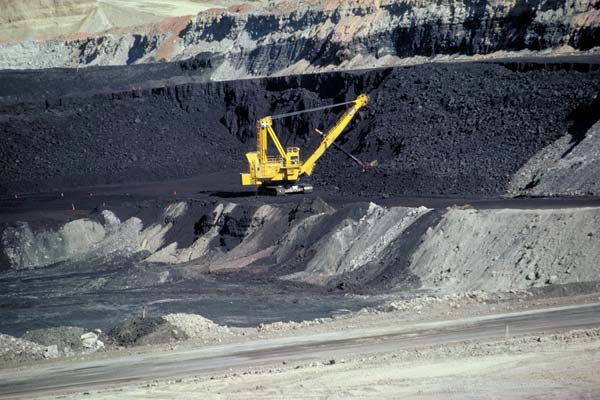Take a deep breath and relax.
It is highly unlikely that "millions of Americans will be freezing in the dark" (in the words of a critic) once new EPA rules lowering carbon emissions from power plants go into effect.
In fact, some analyses suggest that the rules issued last week by the U.S. Environmental Protection Agency--widely expected to reduce the use of coal to generate electricity--simply hasten a change that would have happened anyway.
DON'T MISS: Will Solar Panels Destroy Electric Utilities' Business Model? Yes, They Say
Last October, Stanford University emeritus professor and Nobel Prize winner Burton Richter suggested in The New York Times that a previous set of rules applying only to new coal power plants would do very little, because virtually no new coal-fired plants were likely to be built.

Coal Mine
Natural gas displaces coal
"The shale gas revolution has made natural gas so cheap," Richter wrote, "that it is displacing coal as a fuel for generating electricity"--lowering prices for customers and boosting utility profits.
In just five years, electricity produced from coal fell from almost 50 percent of the total to less than 40 percent (in 2012), and that decline is expected to continue.
Meanwhile, at least 10 states have already cut their greenhouse-gas emissions by 30 percent or more since 2005. They include several in the Northeast, but also Georgia, Nevada, Tennessee, and Virginia.
In Tennessee, where electric generation is dominated by the Tennessee Valley Authority that first brought electricity to much of the state 80 years ago, that agency announced last fall that it would cut its use of coal by 50 percent--before the latest EPA rules were issued.
Every coal plant replaced by natural gas lowers the carbon footprint of each kilowatt-hour of electricity--cutting the carbon of every mile driven by every electric car charged on that grid. Try that in a gasoline vehicle.
![Electric-car wells-to-wheels carbon-emission equivalencies in MPG [Union of Concerned Scientists] Electric-car wells-to-wheels carbon-emission equivalencies in MPG [Union of Concerned Scientists]](https://images.hgmsites.net/lrg/electric-car-wells-to-wheels-carbon-emission-equivalencies-in-mpg-union-of-concerned-scientists_100440262_l.jpg)
Electric-car wells-to-wheels carbon-emission equivalencies in MPG [Union of Concerned Scientists]
Closing down coal cheaper?
Richter calculated in last fall's editorial that pensioning off every one of the 137,000 people who work in the U.S. coal industry--from coal miners to executives--at $50,000 a year would cost $6.8 billion.
That, he suggests, would be cheaper than the $62 billion calculated in 2010 by the National Academy of Science as the annual cost of "damage to human health, grain crops, timber yields, buildings and recreation from coal-fired power plant emissions."
But back to that "freezing in the dark" comment, which came from Joseph Bast, president of the Heartland Institute in Chicago--a pressure group skeptical of the accepted science of climate change.
Last week the Institute blasted out an e-mail to journalists full of pithy quotes about the awful and destructive effects of the "needless" EPA regulations on carbon emissions.
Alarmism: An American tradition
Such views follow a long tradition of dire "sky is falling" predictions that are part of healthy debate about virtually any new government regulation. In the fullness of time, however, they prove to be alarmist, overblown, and occasionally laughable.

Solar Panels by Flickr user Chandra Marsono
The original Clean Air Act of 1963 that required research into the impact of air pollution, followed by actual controls on emissions in 1970 and after, was widely predicted to lead to the death of the U.S. auto industry and indeed the U.S. economy.
Critics said that new regulations to curb acid rain and cut emissions of chemicals destructive to the ozone layer would inevitably produce a national recession and push the U.S. toward Communism.
Instead, regulations based on scientific consensus were issued, survived court challenges, and did in fact address the problems that led them to be proposed.
It seems at least likely that the same will happen with the new EPA rules on carbon emissions--greatly aided by natural-gas reserves that are far larger today than a decade ago.
As for distributed renewable energy, well, the electric-utility industry has suggested that the falling cost of solar and wind power may destroy the business model it's enjoyed for a century.
But that's a different story.
_______________________________________________













